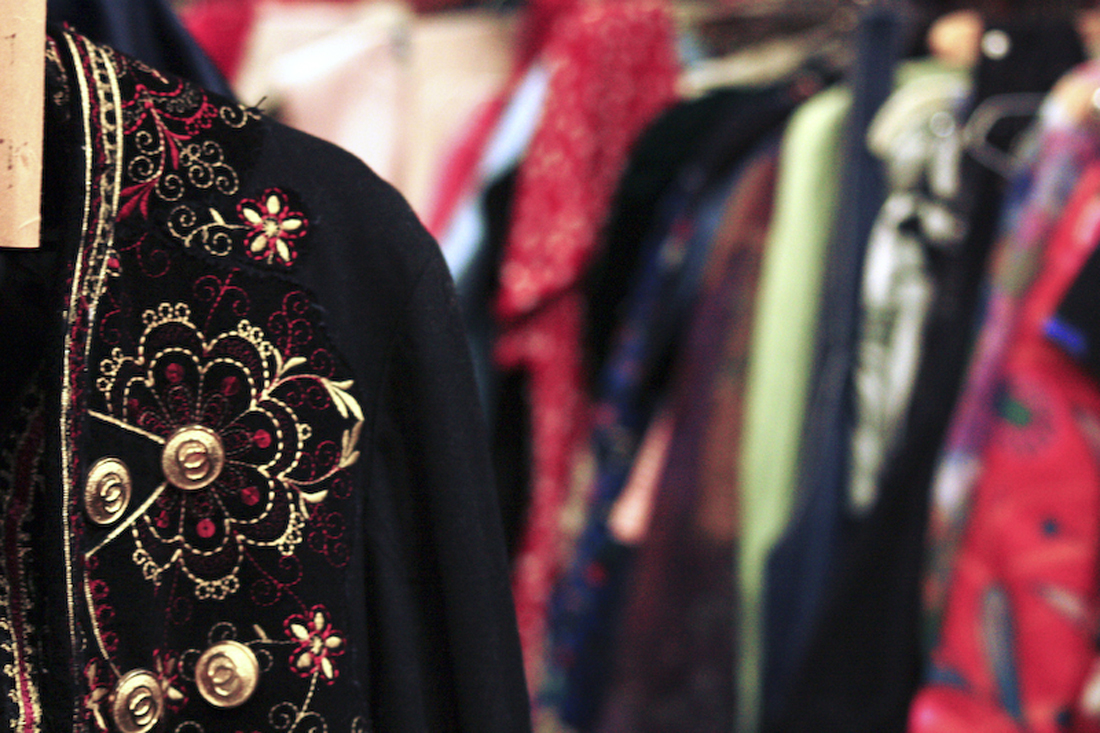The staff behind the sets
A stage show is the product of a series of partnerships between skilled individuals and teams. Between acting, lighting, set, costume, sound, makeup, hair and prop design, one show becomes subdivided into several art forms and practices. A multitude of people are needed to get a show off its feet, and Utah State’s theatre department is no exception.
A particular department within the encompassing theatre realm of study is the costume shop. The shop is a place of full of activity and manual labor. It is a place where opinions are exchanged over hand-sewing as projects are completed and new students within the department learn the ins and outs of costume production.
Of course, a place like this requires someone to be in charge of the stitching masses, and at Utah State that person is Amanda Profraizer, the current costume shop manager.
As the manager of the shop, Profraizer has many responsibilities such as hiring staff, maintaining machines and supplies, supervising the building of the clothes and projects, building garments, supervising designers and students and overall organization.
“The supervision of students is particularly difficult,” Profraizer said, “because they’re all on different levels skill-wise. Some students are very good stitchers, others can only handle smaller jobs and others have never sewn a day in their lives.”
Profraizer said time can be an issue as well.
“We always have to be mindful of our time too; there’s always a deadline, the show must go on, we have an opening night and the actors can’t be naked, the directors frown on that,” she said.
Whether the character is a ragged street urchin in 18th-century England or an elephant trapped in a tree, the costuming department aims to keep the quality equal.
“It never gets old, there’s always a different project. I like that we’re always doing new things, it never gets monotonous,” Profraizer said. “It’s fun to work with students, to get them involved. Especially students who have never done costumes before and they’re able to be a part of things and see a show come to life. It’s nice to see them get so into it and excited.”
“The fact that we get to create things and see them on stage is amazing,” said Molly Hill, a junior in costume design and technician in the shop. “We’re all friends and comfortable with one another and get to work together, too. The people here are the best and my boss is the bomb,” she said.
On top of managing the shop, Profraizer is a fully qualified costume designer with a master’s degree from Utah State. She has worked for theaters all over the country and was on television for Saturday Night Live.
“When I tell people that I’m a costume designer they always say the same three things: First, ‘Really, that’s a real job?’ Yes really. You have to have a master’s degree in costume design to be a costume designer,” she said.
She said the second reaction she often gets is, “You must really love Halloween.”
“No I really don’t enjoy Halloween, I do Halloween 364 days out of the year,” she said. The third clarification she said she must often make is that the actors don’t own the costumes. No actor brings their own costumes to the set.
“If you look at the credits of a movie, you’ll see how many people are involved in one production. We’re all different puzzle pieces in a gigantic puzzle and we all have to come together to make it work,” Profraizer said.
Unity is also a big part of the costume shop.
“I think the reason people love the costume shop so much is it’s a home away from home,” said Annie Lyman, a graduate student in set design. “We can tell our secrets here and share our funny stories with our friends but it’s still a work environment and we get a lot done here while having fun.”
Many different people create the story that shows up onstage, and collaboration is important for everything to flow smoothly.
“I like being a collaborator, a storyteller, I tell stories through the clothing. People don’t realize how powerful and important it is to the telling of the story,” Lyman said.
– jess.wallace@aggiemail.usu.edu

